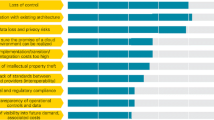Abstract
Cloud computing has become a new computing paradigm that has huge potentials in enterprise and business. Green cloud computing is also becoming increasingly important in a world with limited energy resources and an ever-rising demand for more computational power. To maximize utilization and minimize total cost of the cloud computing infrastructure and running applications, resources need to be managed properly and virtual machines shall allocate proper host nodes to perform the computation. In this paper, we propose performance analysis based resource allocation scheme for the efficient allocation of virtual machines on the cloud infrastructure. We experimented the proposed resource allocation algorithm using CloudSim and its performance is compared with two other existing models.








Similar content being viewed by others
References
Buyya, Broberg, Goscinski, (2011) Cloud computing: principles and paradigms. Wiley, New York
Vaquero LM, Rodero Merino L, Caceres J, Lindner M (2009) A break in the clouds: towards a cloud definition. SIGCOMM Comput Commun Rev 39:50–55
Zhu Y, Jin Q (2012) An adaptively emerging mechanism for context-aware service selections regulated by feedback distributions. Hum-Cent Comput Inf Sci 2(15):1–15
Sosinsky B (2012) Cloud computing bible. Wiley, New York
Thorpe S (2012) Virtual machine history model framework for a data cloud digital investigation. J Converg 3(4):9–14
Uhligetal R (2005) Intel virtualization technology. IEEE Comput 38(5):48–56
Mills K, Filliben J, Dabrowski C (2011) Comparing VM-placement algorithms for on-demand clouds. In: Proceedings of the third IEEE international conference on cloud computing technology and science. IEEE Computer Society, Los Alamitos
Gupta et al (2013) HPC-aware VM placement in infrastructure clouds. In: Proceedings of 2013 IEEE international conference on cloud engineering (IC2E 2013). IEEE Computer Society, Los Alamitos pp 11–20
Kim B et al (2012) An adaptive workflow scheduling scheme based on an estimated data processing rate for next generation sequencing in cloud computing. Int J Inf Process Syst 8(4):555–566
Patel P, Singh AK (2012) A survey on resource allocation algorithms in cloud computing environment. Gold Res Thoughts 2(4)
Majumdar S (2011) Resource management on cloud: handling uncertainties in parameters and policies. In: CSI communicatons, pp 16–19
Jiyani et al (2010) Adaptive resource allocation for preemptable jobs in cloud systems. IEEE Computer Society, Los Alamitos, pp 31–36
Zhong H, Tao K, Zhang X (2010) An approach to optimize resource scheduling algorithm for open-source cloud systems. In: Proceedings of the fifth annual China grid conference. IEEE Computer Society, Los Alamitos
Goudarzi H, Pedram M (2011) Maximizing profit in cloud computing system via resource allocation. In: IEEE 31st international conference on distributed computing systems workshops. IEEE Computer Society, Los Alamitos, pp 1–6
Kumar K et al (2011) Resource allocation for real time tasks using cloud computing. In: Proceedings of 20th international conference on computer communications and networks (ICCCN 2011). IEEE Computer Society, Los Alamitos pp 1–7
Yanggratoke R, Wuhib F, Stadler R (2011) Gossip-based resource allocation for green computing in large clouds. In: Proceedings of 7th international conference on network and service management, pp 24–28
Kong Z et al (2011) Mechanism design for stochastic virtual resource allocation in non-cooperative cloud systems. In: Proceedings of 2011 IEEE 4th international conference on cloud computing. IEEE Computer Society, Los Alamitos, pp 614–621
The Eucalyptus. http://www.eucalyptus.com/eucalyptus-cloud. Access 30 May 2013
OpenNebula. http://opennebula.org/about:about. Access 30 May 2013
OpenStack. http://www.openstack.org. Access 30 May 2013
Nimbus. http://www.nimbusproject.org. Access 30 May 2013
Goudaezi H, Pedram M (2011) Multidimensional SLA-based resource allocation for multi-tier cloud computing systems. In: IEEE 4th international conference on cloud computing, pp 324–331
Bunch JR, Hopcroft J (1974) Triangular factorization and inversion by fast matrix multiplication. Math Comput 28:231–236
Calheiros RN, Ranjan R, Beloglazov A, De Rose CAF, Buyya R (2011) CloudSim: a ToolKit for modeling and simulation of cloud computing environment and evaluation of resource provisioning algorithm
Acknowledgements
The research was supported by the Global Science experimental Data hub Center/KISTI in 2013.
Author information
Authors and Affiliations
Corresponding author
Rights and permissions
About this article
Cite this article
Lee, H.M., Jeong, YS. & Jang, H.J. Performance analysis based resource allocation for green cloud computing. J Supercomput 69, 1013–1026 (2014). https://doi.org/10.1007/s11227-013-1020-x
Published:
Issue Date:
DOI: https://doi.org/10.1007/s11227-013-1020-x




